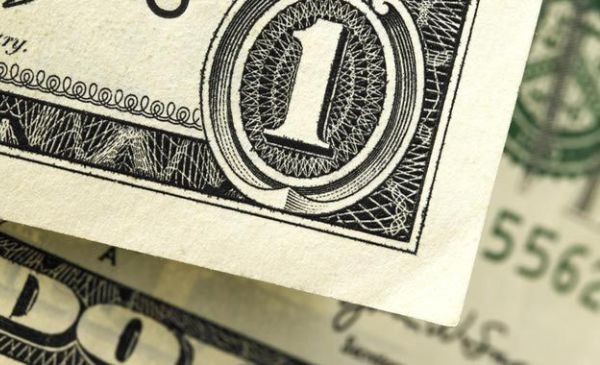
In the managerial pecking order within most organizations, finance occupies a more central role than the flimsy business of marketing.
Financial people use complex terms like ‘derivatives’ and ‘collateralized debt obligations’, and deal with multibillion-dollar sums on a daily basis. Marketers are a simpler mob, occupying their time with more basic duties, such as brand building and customer satisfaction.
However, when you think about it, shouldn’t it be the other way around? Shouldn’t the marketer, who builds the brand and works with the consumers who pay for everything, have a more exalted position than the manager who simply accounts for and invests the resulting income? Given the corporate shenanigans in the financial sector that emerge on a regular basis, doesn’t it make more sense to trust the marketers who generate value, rather than the incomprehensible financial markets that just seem to lose it?
Brands continue to provide empirical evidence that marketing does indeed beat finance. That evidence is mounting. The next time you are asked to make a case for building a strong brand refer to the following eight fact-based insights.
1. Brand Leadership Equals Business Leadership
The world today is far different from what it was only a couple of decades ago and these structural changes have placed brands at the forefront of business success. A review of stocks in the S&P index shows that businesses that own stronger brands perform significantly better than businesses that own weaker brands.
2. Why Brands Drive Financial And Business Results
The bottom line is that strong brands have a very strong positive impact on financial and other business results. Following are key data points on some of the ways in which this occurs.
3. Strong Brands And Corporate Growth
In what ways does developing a strong brand increase a company’s growth potential? A strong brand helps a company grow in three specific ways. First, companies can charge a higher price — which hopefully leads to higher profits, thereby resulting in more cash to expand the business further. For instance, since Caterpillar has a very strong name in the construction equipment category, it can charge more—because buyers know of Caterpillar’s great product and service quality. In earning more, it can grow faster.
4. How Brands Create Financial Value
Perhaps the biggest pay off of creating a strong brand is permission to extend into new product categories. If you have successfully built a strong brand, you can leverage the positive feeling people have for it by launching new products in categories that fit the brand positioning. In cases like these, it is more about how well you deliver on the brand promise. The brand itself is already well-known and appreciated.
5. The Role And Value Of Branding
So many people misunderstand the role of brand. They think it’s a synonym for marketing, and marketing is a synonym for media spend.
- A brand tells people who to value and why.
- Marketing tells them how the brand is valued, and where to access it.
The purpose of your brand is to use that perceived value to provide you, through marketing, with sustained sales at a greater level of return than the market is inclined to give you over the longer term.
6. Warren Buffett And Strong Brands
Buffett likes strong brands because they create a protective ‘moat’ around a business. He believes that for a business to earn excellent returns on invested capital, it must command a sustainable, long-term advantage. So, strong well-known brands are one of two types of brand that excite Buffett as an investor, the other being low cost producers. Buffett takes the long view for his investments. He is looking for a sustainable competitive advantage – not a quick win.
7. Why Strong Brands Drive B2B Markets
Brands matter in B2B markets. In fact, they may matter even more in B2B than in B2C.
8. The Business Impact Of Strong Brands
What is the business impact of strong brands? Why are strong brands so important?
Brands deliver the following key benefits to organizations:
- Increased revenues and market share
- Decreased price sensitivity (or the ability to charge price premiums to consumers and the trade)
- Increased customer loyalty
- For manufacturers, additional leverage over retailers
- Increased profitability
- Increased stock price and shareholder value
- Increased clarity of vision
- Increased ability to mobilize an organization’s people and focus its activities
- Ability to attract and retain high quality employees
- Reduce cost of capital – A strong brand facilitates access to financial markets with more favorable conditions (lower perceived risk); also, perception influences the price of the stock
- Extend duration of cash flow – strong brands last longer than weak ones, therefore a strong brand would generate profits for a longer period of time than a weak brand.
- A strong, well-positioned brand extends the life of your organization indefinitely by providing independence from a particular product category, increasing flexibility for future growth (through extension), and therefore, increasing the ability to expand into new product and service categories and alter the product and service mix to keep up with marketplace demands. Without a strong brand, your organization’s life span will be tied to the life span of the products it manufactures or the services it provides.
Co-authored with Mark Ritson.
Build A More Valuable Future For Your Brand. Join us in Hollywood, California for Brand Leadership in the Age of Disruption, our 5th annual competitive-learning event designed around brand strategy.
The Blake Project Can Help: The Brand Positioning Workshop
Branding Strategy Insider is a service of The Blake Project: A strategic brand consultancy specializing in Brand Research, Brand Strategy, Brand Licensing and Brand Education
FREE Publications And Resources For Marketers

















Katie Pirquet’s comment: Victoria, BC in Canada has long enjoyed a resurrected rail bed known as the “Galloping Goose Trail”, named after a noisy, gasoline-fired locomotive that plied its routes long ago. The trail extends from an abandoned gold rush town (Leechtown), 10km from Sooke, BC, some 30km to downtown Victoria, with a branch that wanders about the same distance up the Saanich Peninsula to the town of Sidney. Check it out on Google Maps. It is heavily used by commuters on bikes, walkers, hikers, and joggers. The Trail is accessible to everyone, with safe crossings at many roadways and no big hills. Many sections are paved, others maintained with packed gravel and/or chips. It passes through a few parks on its way, giving access to them, too. The Galloping Goose Trail has become an important feature of the Vancouver Island outdoor-loving lifestyle, and will remain so even if the corridors one day become shared with some form of light transit. Vancouver Islanders love to get “out there”, rain or shine, and the GGT is one of our favourite amenities!